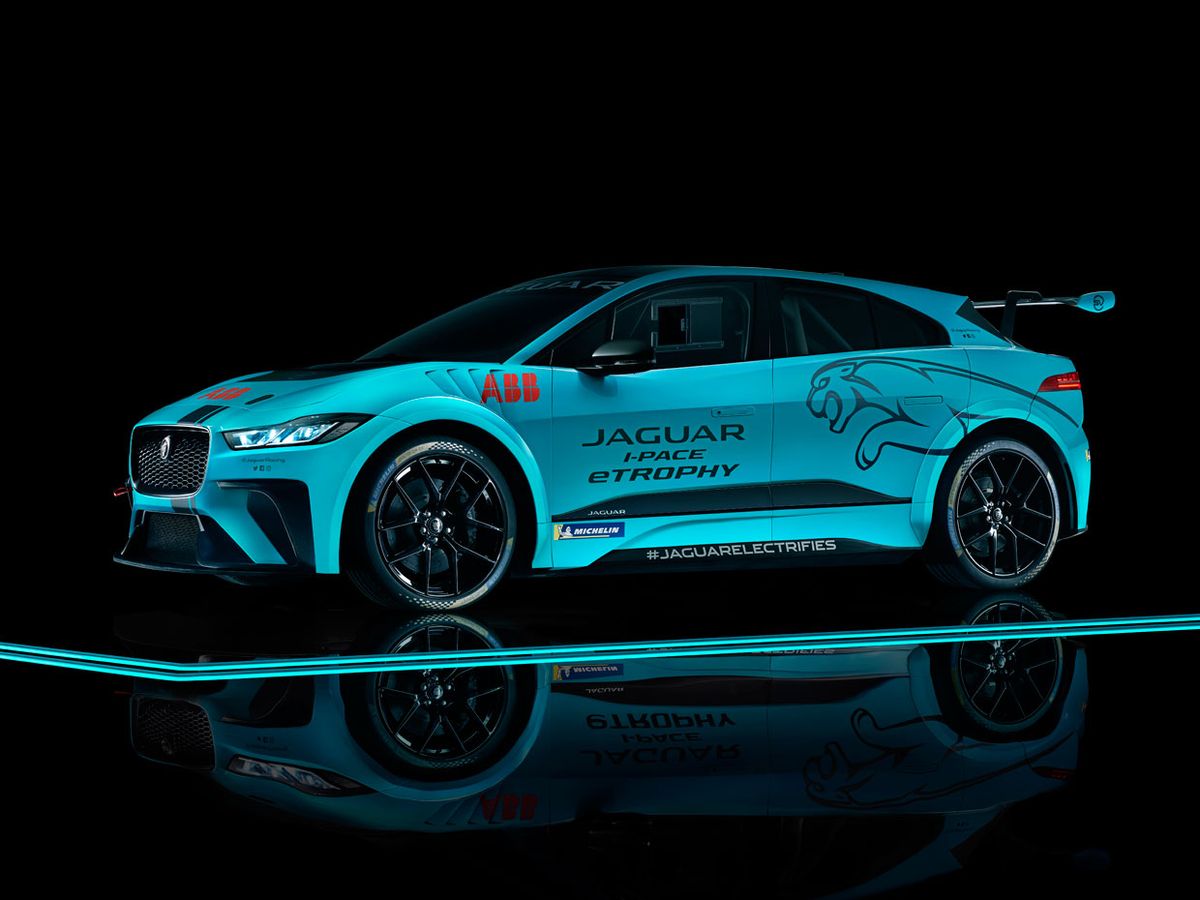All-Electric Jaguar Earns its Racing Stripes
A production EV, refitted for the racetrack

Making an electric car go fast in a straight line on the street is one thing; making one that can withstand the rigors of racing is another. Jaguar’s I-Pace eTrophy showed the difference in December by kicking off the world’s first all-electric, production-based championship with a historic run in Saudi Arabia. That eTrophy series, a global undercard for the FIA’s Formula E, included pro women—such as Katherine Legge with the Rahal Letterman Lanigan Racing team—competing against men in the kingdom for the first time.
I did my laps in that same car at the Silverstone circuit in the United Kingdom. And if the I-Pace isn’t the fastest race car I’ve tested—give this technology time, please—it was definitely the quietest. As I shot around Silverstone’s Stowe Circuit, I could barely hear the motor’s gentle whir above the groans of the suspension and the rumbling of the 56-centimeter (22-inch) Michelin Pilot Sport tires.
DUAL MOTORS
294 kW (394 hp)
0–97 km/h (60 mph)
4.5 seconds
BASE PRICE
US $260,000
Jaguar’s Special Vehicle Operations has built 20 of these groundbreaking racers, which use as a starting point the same electric I-Pace you see in showrooms. The racers have the same 90-kilowatt-hour battery, for example, and also the same dual synchronous motors with 294 kilowatts (394 horsepower) and 700 newton meters of torque. Despite a 610-kilogram battery, the racers trim 225 kilos from the road-going version’s hefty 1,965 kg.
In this newfangled series, durability and safety matter as much as performance: Motors are designed to last for the series’ entire three years, or 30 races, with only the battery getting replaced after each season. The Terra 51 Charge Station, a DC fast charger with roughly 50 kW of power, is custom-designed to be compact and easily portable, for transport and racing. Those races last for 25 minutes plus one lap, or roughly 100 kilometers (62 miles), depending on the course.
I’m strapped into the car, sharing its safety cage with the battery, which is cradled inboard for safety. Gasoline fire has always been a prime danger in racing, but the Jaguar’s electrical system, with 389 volts and up to 550 amperes, brings its own challenges: If I crash, I’ll need to toggle separate switches that trigger two levels of electrical isolation and minimize the chance I’ll be electrocuted. Lights on the Jag’s exterior and dash glow green when there’s no live electricity but glow blue or red for potential threats. In that case, emergency workers are equipped with rubber gloves, mats, and specialized gear to aid the driver and car.
To maximize cooling, the race version has hood and fascia openings larger than those in the showroom car, as well as double the A/C system capacity, the better to cool the battery pack. Regenerative brakes create up to 0.4 g’s of deceleration. When the battery is fully charged, no energy recovery is possible, but as the race proceeds, drivers can adjust the regenerative brake over 11 settings. The results are pretty impressive for a two-metric-ton crossover: The racing I-Pace scoots to 97 km/h (60 mph) in 4.5 seconds, with a top speed twice as high, at 121 mph.
But this competition is also about putting Jaguar on the EV map, according to James Barclay, director for the Panasonic Jaguar Racing Team. “We have 9,500 engineers in [England] developing this technology,” Barclay says. “As a British company, we’re the first to have gone racing with our electric car, and we’re very proud of that.”